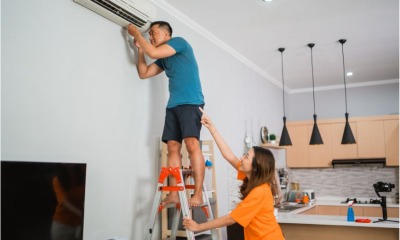Every time you flip through the pages of home and garden magazines, you can’t resist looking at lush gardens, teeming with lovely greens and blooms. All too often, these featured gardens are created by a full-time gardener. Of course, as a homeowner, you likely want to have a garden like that. The problem, however, is that if you don’t have the luxury of time you can’t have a garden that resembles a national park. But, that doesn’t mean you can grow a garden on your own. You can still satisfy your green thumb even if you can’t spend a lot of time tending to your greens. Below are some tips how you can grow a hassle-free garden.

Take careful consideration of your plant selection
The key to having a low-maintenance garden is to choose plants that suit the conditions in your yard and will prevent you from spending hours attending to their needs. For instance, dwarf and slow-growing plants will not require frequent pruning and pinching unlike tall shrubs that keep on growing and demand regular trimming. You should also try to avoid opting for delicate plants like hollyhocks, garden phlox or delphiniums. Although they are exceptionally beautiful when in full bloom, you need to constantly look after them so as to prevent diseases and pests from affecting them.
Reduce your lawn
The lawn is one of the most time-consuming parts of the garden. It requires mowing, watering and reseeding, not to mention that it is vulnerable to pests and diseases. You don’t have to give up your entire lawn. But, to make sure you won’t waste time tending to it, your best bet is to downsize the area. You can do this by carving zones in the area. For example, you can use a combination of paving slabs and gravel on one part of your lawn to create an interesting feature on the ground. On one side, you can integrate an elevated platform where you can set a table and chairs for entertaining guests. You can also create a pathway on one corner and border it with mulches.
If, for instance, you are not ready to downsize your lawn, ditch the grass and opt for a different ground cover, such as clover. Such grass alternative is easy to tend to and you can get multiple duty from it, as it adds punch to the garden, keep weeds at bay, defines pathways, soften hard edges and fill voids.
Consider container gardening
One of the best ways to have a trouble-free garden is to plant greens and blooms in containers. The great thing about container gardening is that it allows you to grow plants in a number of containers that you may already have at home, including hanging baskets, window boxes, decorative pots, etc. With a few well-chosen plants that are easy to care for, such as petunias, pansies and daylilies, you can have a trouble-free garden. Nonetheless, since the plants are not planted on beds, you can easily move them around the area to change the look of the space whenever the mood strikes.
This guest post was written by Ericka for www.mcintyremasonry.co.uk. Ericka loves to learn and share information about gardening. She is also passionate about home improvement, which inspires her to write helpful content about home repair, organization and maintenance.

 Tech9 years ago
Tech9 years ago
 Tech9 years ago
Tech9 years ago
 Business4 years ago
Business4 years ago
 Business9 years ago
Business9 years ago
 Law3 years ago
Law3 years ago
 Tech7 years ago
Tech7 years ago
 Tech4 years ago
Tech4 years ago
































